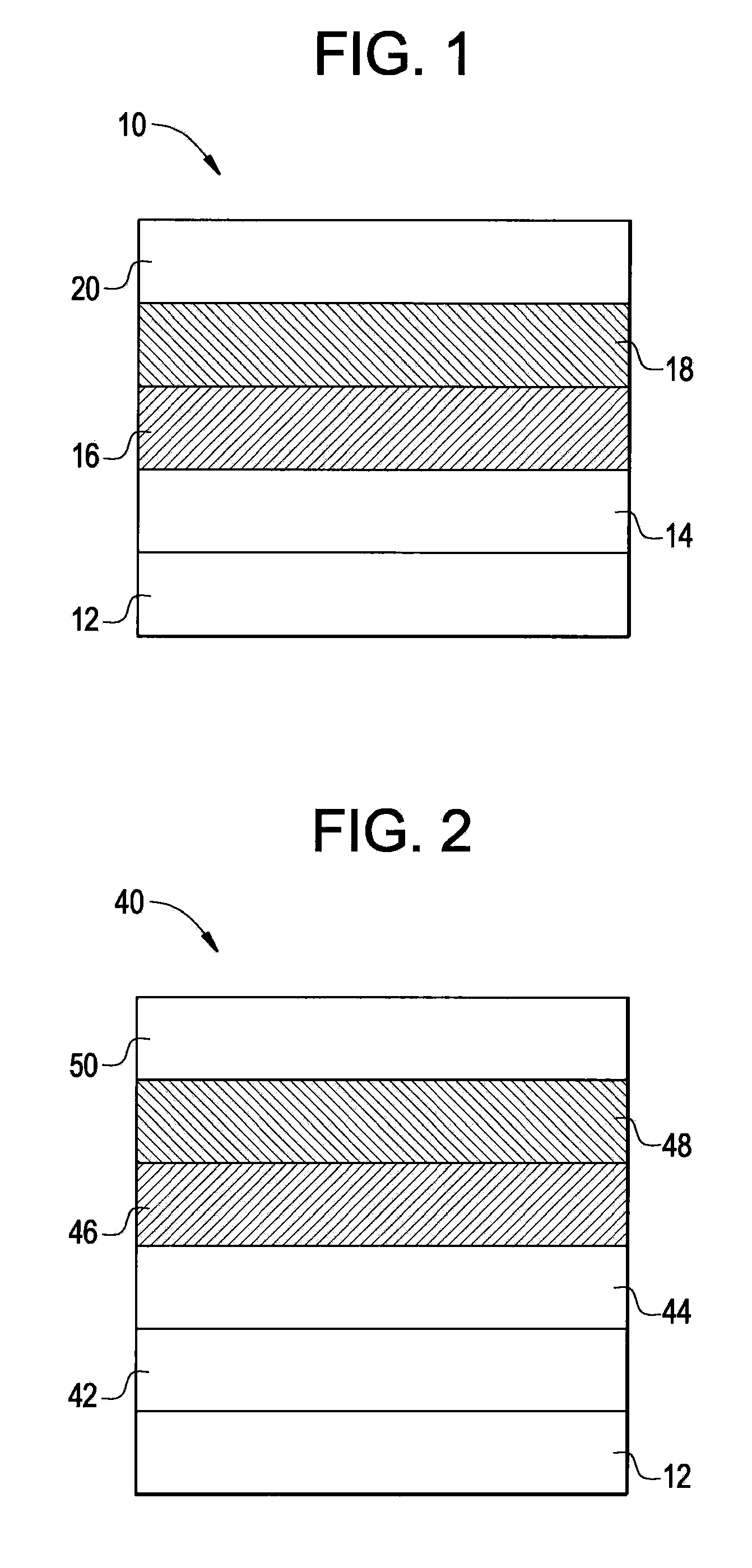Method of Manufacture of a Multi-Layer Phosphorescent Organic Light Emitting Device, and Articles Thereof
a phosphorescent organic light emitting device and multi-layer technology, applied in the direction of discharge tube luminescnet screen, other domestic articles, organic semiconductor devices, etc., can solve the problems of low manufacturing throughput, high cost and low manufacturing throughput, and the fabricated multi-emission phosphorescent oleds via solvent coating
- Summary
- Abstract
- Description
- Claims
- Application Information
AI Technical Summary
Problems solved by technology
Method used
Image
Examples
example
[0082]A multi-layered phosphorescent OLED was constructed as follows. The phosphorescent OLED comprises a blue phosphorescent polymer emissive layer and a red phosphorescent emissive layer. Pre-patterned ITO coated glass was used as the anode substrate, and was cleaned with UV-ozone for 10 minutes. A layer (60 nm) of poly(3,4-ethylendioxythiophene) doped with polystyrene sulfonic acid (PEDOT:PSS) obtained from H.C. Starck was deposited atop the ITO via spin-coating and then baked for 1 hour at 180° C. in air. The coated substrate was then transferred into a glovebox filled with argon (both moisture and oxygen were less than 1 ppm). The blue phosphorescent polymer emissive layer of 275-44-5 (approximately 30 nm thickness) was then spin-coated from solution in chlorobenzene atop the PEDOT:PSS layer and baked on a hotplate (pre-heated to 120° C.) for 10 minutes. Next, a mixture of OXD-7 (1,3-bis[(p-tert-butyl)phenyl-1,3,4-oxadiazoyl]benzene), purchased from H.W. Sands and used as recei...
PUM
| Property | Measurement | Unit |
|---|---|---|
| Solubility (mass) | aaaaa | aaaaa |
| Emissivity | aaaaa | aaaaa |
| Phosphorescence quantum yield | aaaaa | aaaaa |
Abstract
Description
Claims
Application Information
 Login to View More
Login to View More - R&D
- Intellectual Property
- Life Sciences
- Materials
- Tech Scout
- Unparalleled Data Quality
- Higher Quality Content
- 60% Fewer Hallucinations
Browse by: Latest US Patents, China's latest patents, Technical Efficacy Thesaurus, Application Domain, Technology Topic, Popular Technical Reports.
© 2025 PatSnap. All rights reserved.Legal|Privacy policy|Modern Slavery Act Transparency Statement|Sitemap|About US| Contact US: help@patsnap.com



